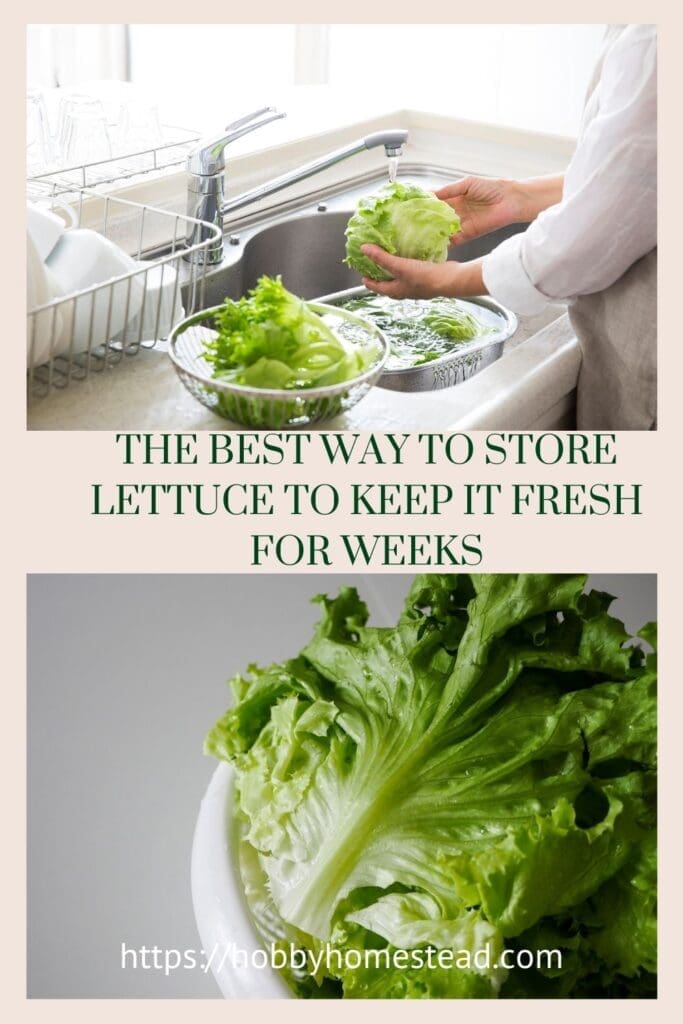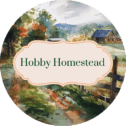Good crisp salad greens are key and knowing the best way to store lettuce and keep it fresh and crisp for weeks is a must. If you’ve ever brought home lettuce from the grocery store or harvested it fresh from your own garden, you know how fast those vibrant leaves can lose their crispness.
Whether it’s hearty romaine lettuce, tender butter lettuce, or delicate baby greens, each type of lettuce requires careful handling to maintain its fresh texture and nutritional value.
Why Fresh Storage Matters
Storing lettuce correctly is key to maximizing both freshness and longevity, especially for greens with high water content like iceberg lettuce and romaine hearts.
Lettuce can start to wilt quickly when exposed to air and excess moisture, leading to limp or even slimy leaves. Proper storage not only helps reduce food waste but also preserves the nutritional value and crispness of each lettuce head. Whether you’re storing pre-washed greens, whole heads, or individual lettuce leaves.

The Best Way to Store Lettuce to Keep it Fresh for Weeks
By following a few simple steps, you can extend the shelf life of your lettuce and enjoy fresh, crisp greens for weeks. This guide covers the best way to clean, dry, and store lettuce. So, you can keep it fresh and avoid food waste.
Wash and Store Fresh Garden Produce
The Cleaning Process: Step-by-Step
Start by removing any damaged outer leaves from your fresh produce, which can carry bacteria or excess dirt.
For heads of lettuce, fill a large bowl with cool water and submerge the leaves, gently agitating to remove dirt and debris.
Leaf lettuces and baby greens may need a little extra attention; rinse them under a gentle stream of cool water to prevent bruising.
A bowl of cold water is especially helpful if you’re dealing with delicate greens that can’t handle rough handling.
Pro Tip. If you’re working with a whole head of lettuce, it’s a great way to clean each leaf without risking damage to the delicate cell walls, which can cause excess water to pool, making storage trickier.
Proper Drying: The Secret to Freshness
Drying lettuce well is the easiest way to prevent premature spoilage. After washing, use a salad spinner method to remove as much moisture as possible.
For extra moisture that the salad spinner may miss, lay the leaves on a clean kitchen towel or paper towels and pat them dry. If you’re preparing to store whole heads or romaine hearts, let them air dry for a few minutes before storing.
For tender greens or baby greens, a single layer between two dry paper towels helps absorb any remaining water droplets.
Extra moisture on leaves can lead to wilting and faster spoilage, so take your time with this step to keep your lettuce crisp and fresh.
Storage Methods for Maximum Freshness
Once your lettuce is clean and dry, it’s time to find the best storage solution to extend its shelf life. Different types of lettuce have different needs, but in general, the goal is to prevent excess moisture buildup while still allowing air circulation.
Paper Towel Layer in Zipper Lock Bags. For loose greens or individual lettuce leaves, line a zipper lock bag with a dry paper towel. Place the greens in a single layer, add another paper towel layer if needed, and store in the crisper drawer of your refrigerator. Replace the paper towel every couple of days to ensure it continues absorbing any extra moisture.
Glass or Plastic Containers. For whole heads or romaine hearts, use a glass container or plastic boxes lined with a paper towel at the bottom of the container. This method helps trap moisture away from the lettuce while allowing airflow, keeping the leaves crisp.
Perforated Plastic Bags. Many leafy greens, like pre-washed lettuce or full heads from the grocery store, come in perforated bags to allow ethylene gas to escape, which slows down spoilage. These bags are designed to maintain a cold temperature while preventing too much moisture from accumulating.
For delicate greens like butterhead lettuce, a closed plastic bag can sometimes trap too much moisture, so consider placing it in a crisper drawer or a produce keeper for additional airflow.

Refrigeration Tips
Store lettuce in the coldest part of your refrigerator, ideally in the crisper drawer, which provides a steady, cold temperature and controlled humidity for fresh vegetables.
Keep lettuce away from fruits that produce ethylene gas, like apples, to avoid any ill effect on your greens.
Heads of lettuce, like iceberg or romaine, can handle cooler temps, while delicate greens benefit from slightly higher temperatures within the drawer.
Does this work the same for store bought lettuce and lettuce harvested from the garden?
Yes, these storage techniques generally work the same for both store-bought lettuce and garden-harvested lettuce, but there are a few extra steps you might want to take with garden-fresh greens, especially if you’re dealing with extra dirt or weeds.
For Garden Lettuce
Since garden lettuce often has more soil or the occasional weed mixed in, you’ll want to pay a bit more attention to cleaning. Here’s how to adapt the process for freshly harvested greens:
Remove Debris. Before washing, shake off any loose soil and manually remove weeds and damaged leaves. This quick pre-clean makes washing easier and more effective.
Double Soak. Place your freshly picked lettuce in a large bowl of cool water, gently swishing the leaves to dislodge any remaining soil or tiny pests. For very dirty lettuce, do a second rinse with fresh water. This ensures that all dirt is removed without bruising the leaves.
Dry Thoroughly. Garden lettuce, which may hold a bit more moisture than store-bought, can benefit from a salad spinner followed by laying the leaves on a clean dish towel or a layer of paper towels. Pat them dry to remove any remaining moisture, as extra water can shorten the storage life.
Store Lettuce as Usual. Once its fully dry, store it just like store-bought lettuce: in an airtight container, perforated bag, or zipper lock bag with a layer of paper towels to absorb moisture. This will help maintain the freshness and crunchiness of the leaves for as long as possible.

A Note on Nutrients and Freshness
Garden-harvested lettuce often has more nutrients since it’s fresh and unprocessed. If you can store it properly, you’ll get the longest shelf life and the best nutritional value, up to two weeks or more. Depending on the type of lettuce and how well it’s dried.
By adding these few extra steps for garden lettuce, you’ll keep it fresh and ready for salads, sandwiches, or any dish that calls for crisp greens.
Refreshing Wilted Lettuce
If your greens start to look a little droopy, don’t toss them yet! Reviving slightly wilted lettuce is easy. Place the washed leaves in a bowl of ice-cold water or add ice cubes to rehydrate the leaves. This process helps restore some crispness by rehydrating the cell walls. After a quick soak, dry the greens again and return them to the storage container.
Signs It’s Time to Toss
Lettuce that has gone bad will have slimy leaves, a distinct odor, or visible signs of decay. Be mindful of any lettuce past its best-by date, and always check for freshness before using. Fresh lettuce should look vibrant and feel crisp; any wilted or slimy leaves can indicate that it’s time to discard them.
By following these steps, you’ll be able to store lettuce for weeks at a time. Whether you’re enjoying fresh salad greens or using up your farmers’ market haul.


